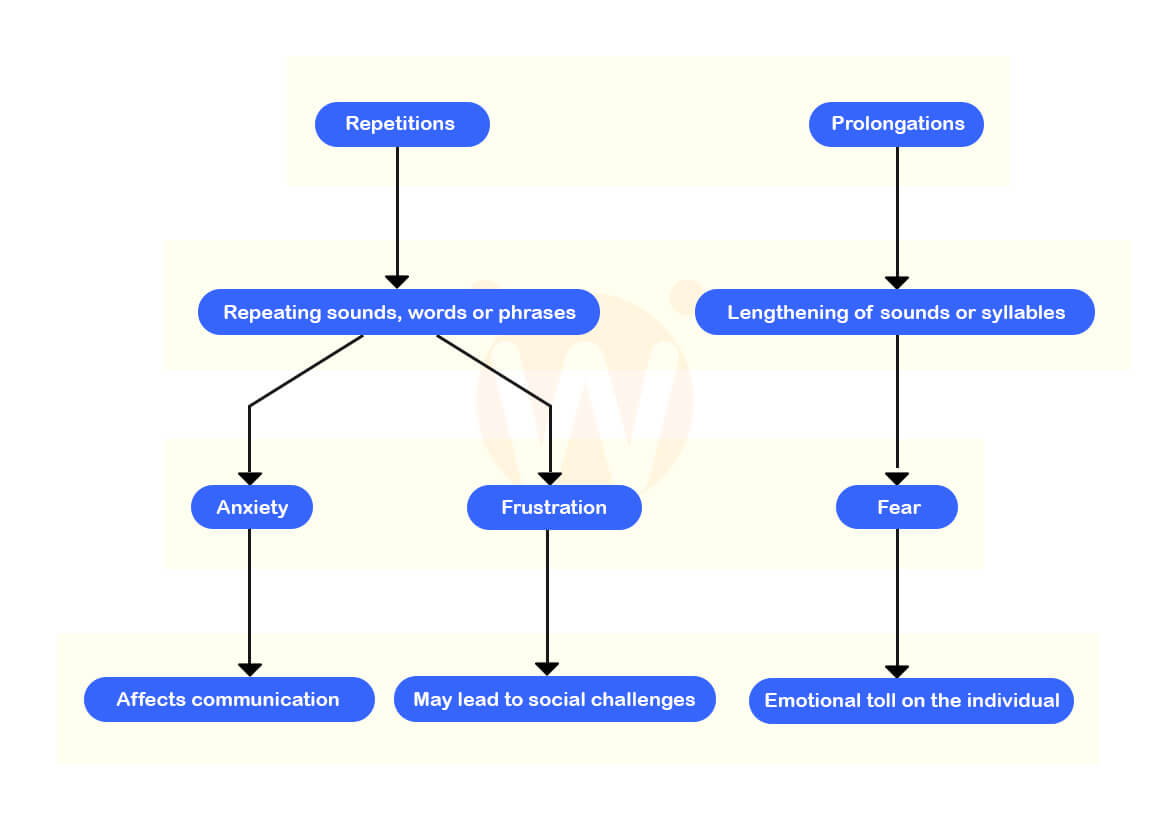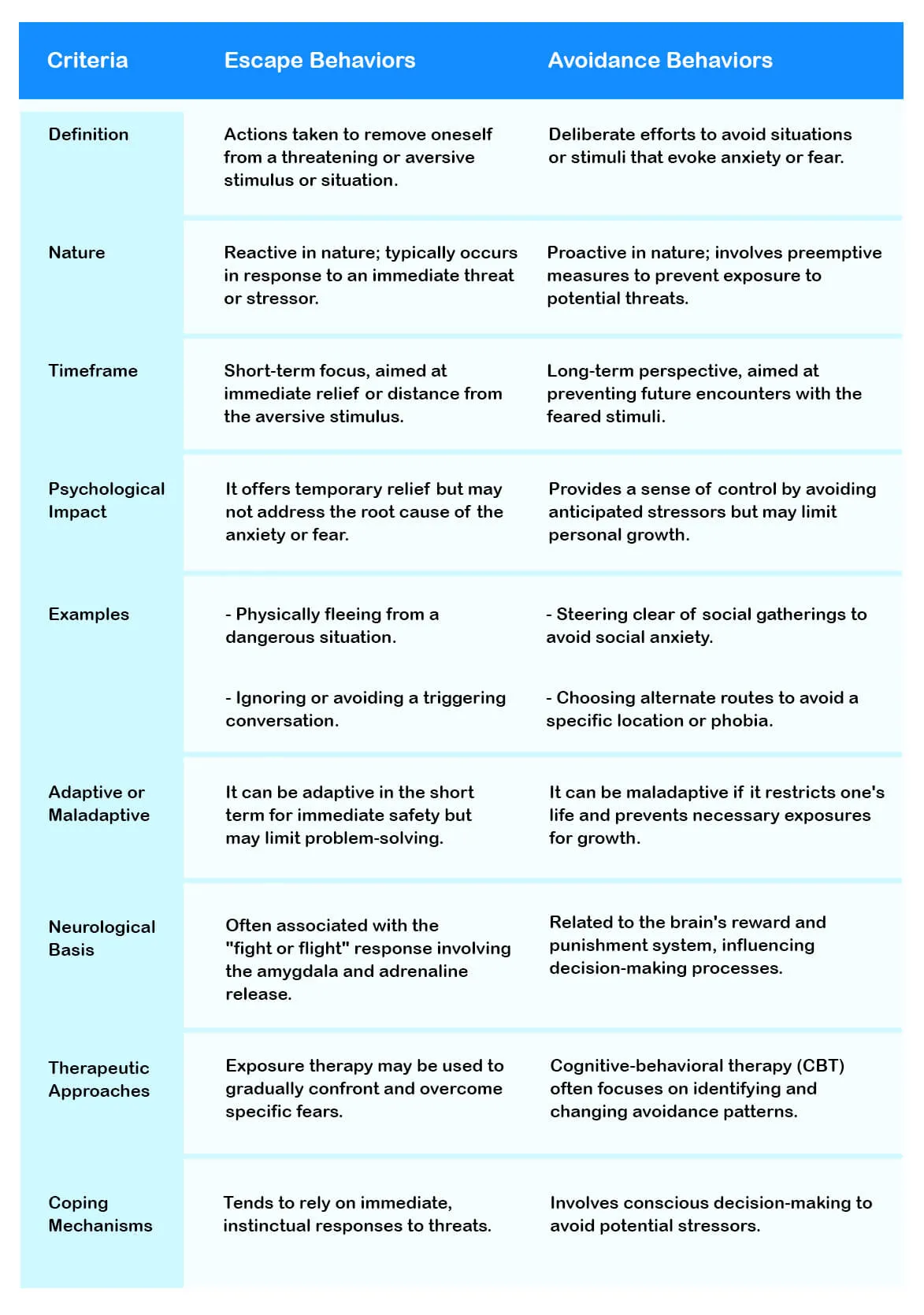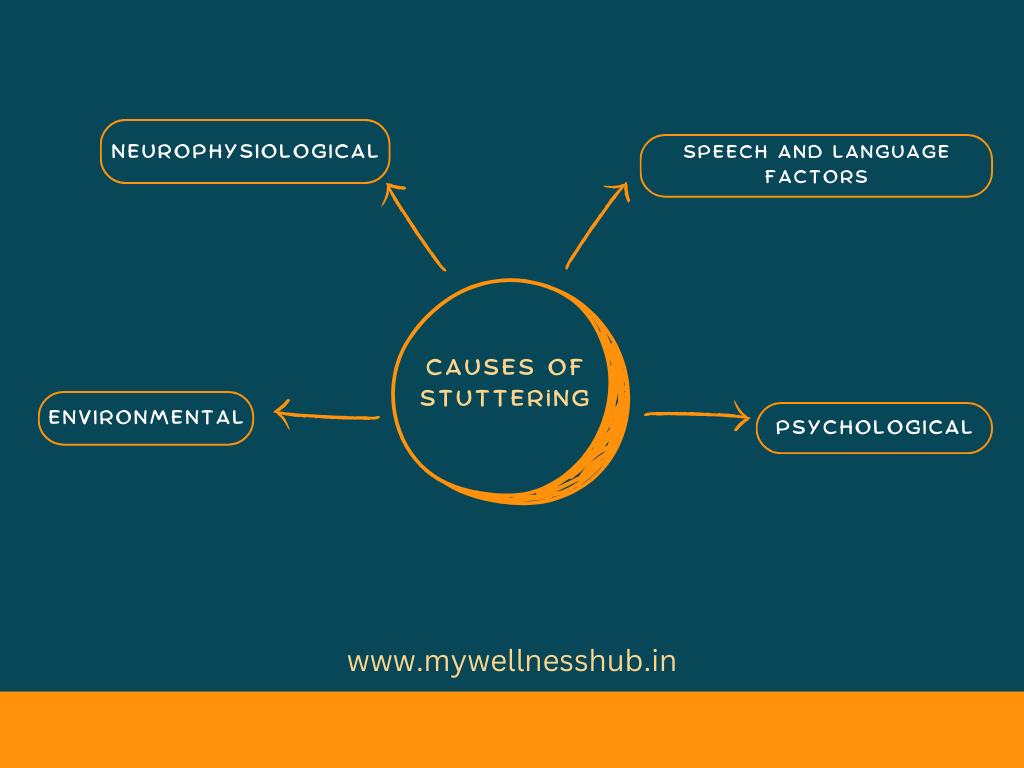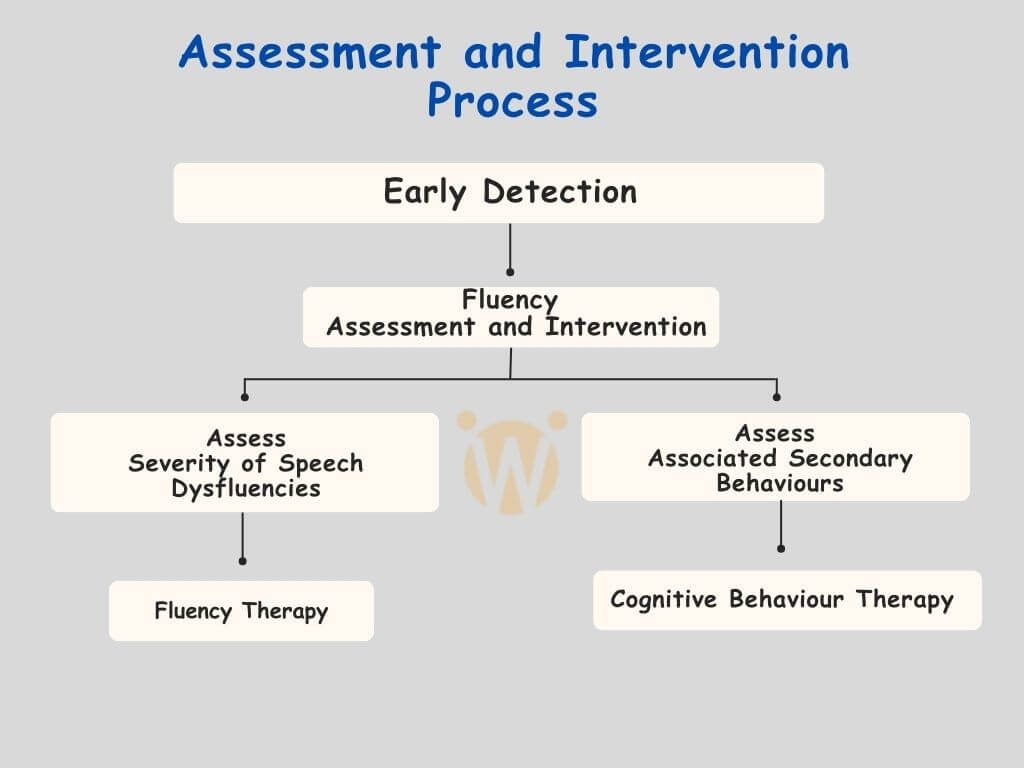What is Stuttering: Types, Symptoms, and Causes
By Wellness Hub
Last Updated: October 4, 2023
Whether you call it “Stuttering” as per American English or “Stammering,” as per British English, both refer to dysfluent speech. They mean the disturbance in the fluency or flow of speech. Stuttering is a disorder in which the fluency of speech is affected by pauses, repetitions, prolongations, and hesitations, sometimes involving involuntary body movements. Stuttering or stammering is most commonly found in preschoolers. Researchers say that somewhere between 5 to 10 percent of children stutter at some point. Boys are more likely to have stammering than girls.
Let us try to explain the meaning of stuttering or stammering. If a person needs to say something, the rate of speech would be averagely fast and the flow of speech would be lighter and easier. For example, to say, “I’m reading these lines now,” it takes 2 to 5 seconds of time. But if an individual takes one minute for each word, making it 5 minutes to complete the whole sentence, would anyone be able to understand that? Such lag occurs in the rate of speech due to dysfluency. In the same way, if the person takes some effort to complete each word, like applying much pressure in pronouncing each word or taking much effort to have the word come with some force through the mouth, which was not fluent speech because it was effortful. So fluency is continuous, effortless speech at a fast rate. Therefore, the parameters of fluency are continuity, rate, and effort.
Understanding Stuttering
To understand stuttering better, it is good to have some examples and explanations. Stuttering or Stammering can include the following patterns.
Type of Dysfluencies
Repetitions
- Repeating certain syllable/sound or a part of the word. For example, “l-l-l lunch”, “ma-ma-ma Monday”
- Repeating monosyllable or multisyllable in a word. For example, “I’m-m-m reading this”, “He went-went-went to home,”
- Repeating the phrases. For example, “Where is- Where is- Where is your sister?”
Prolongations
- Sound prolongations
These include examples such as “mmmmooove aside,” “Daaaaada”
- Silent prolongations
These are the silent periods that include tensed articulatory postures, mostly for the initial sounds. For example, while saying a word like “But” such individuals take the certain gap taken initially and the pressure needed to say the word.
Broken words
Silent intervals within words. An example could be, “do- (silent pause)-ing.”
Interjections
- Sound/syllables interjections. For example, “He will umm come tomorrow.”
- Words Interjections. example, “I can well swim”
- Phrase interjections. For example, “It is you know – you know very beautiful”
Pauses
Giving excessively long silent intervals at inappropriate loci in speech. An example of this can be, “I am (long pause) coming there”
Revisions
Producing sounds that retain the same idea but with a change in words. For example, “I will go by bike—car”
Incomplete phrases
Production of sounds that suggest that the individual speaking has already dropped the idea that he or she was going to express
For example, “I will now—–let me have this”
Signs and Symptoms of Stuttering

The primary signs and symptoms of Stuttering or Stammering can include one or more of the following:
- Disturbances in the fluency of speech
- Repetition of words or parts of words
- Prolongation of letters or sounds
- Involuntary blocks between words in a sentence
- Gaps in speech, such as “um” or “uh” while pronouncing a word
All such issues make it tough to hold a conversation. They in turn, create some unwanted emotional disturbances such as:
- Getting frustrated and feeling anger when unable to produce a word clearly
- Feeling facial tension or lip tremors when tries to talk
- Getting difficult to converse in public or to strangers
- Avoiding social situations or gatherings to avoid talking
- Trying to use alternative words instead of producing the exact word
Facing such emotional imbalances would develop low self-esteem and fear in interacting with other people, especially strangers. Under the conditions that increase stress or anxiety, hurriedness, tiresomeness, or feeling of self-consciousness, the person stutters more often than usual.
Symptoms such as rapid eye blinking, jerking head, clenching fists, or facial tics can help us identify such changes. All these would make the stuttering worse.
Secondary behaviors
Secondary behaviors of stuttering are additional physical or verbal actions that individuals who stutter may develop as a way to cope with or manage their stuttering. These behaviors often arise as a result of the anticipation, frustration, or anxiety associated with stuttering. While primary behaviors involve the actual disruptions in speech fluency (such as repetitions, prolongations, or blocks), secondary behaviors manifest as reactions to the primary behaviors. These behaviors can vary widely among individuals and can be classified into two main categories.
Escape Behaviors
These behaviors occur when a person who stutters tries to break free from a moment of stuttering. They are immediate reactions to moments of dysfluency and are intended to help the individual move past the stuttering moment. Some common escape behaviors include Head movements, eye blinks, facial grimacing, and physical tension like tightening muscles in the face, neck, or shoulder while attempting to speak.
Avoidance Behaviours
Avoidance behaviors involve efforts to prevent or reduce the occurrence of stuttering by altering speech patterns or avoiding certain words, sounds, or speaking situations. These behaviors are more long-term strategies to manage the fear of stuttering. Common avoidance behaviors include
- Word substitution: Changing words that are likely to trigger stuttering to easier-to-say alternatives.
- Circumlocutions: Talking around a specific word or topic to avoid potential stuttering moments.
- Selective mutism: Avoiding speaking altogether in situations where stuttering is anticipated.
- Avoidance of certain sounds or words: Choosing to avoid words or sounds that are particularly challenging to say.

It’s important to note that while these secondary behaviors may initially provide some relief from the discomfort of stuttering, they can ultimately contribute to more significant communication challenges and reinforce the emotional distress associated with stuttering.
Causes of Stuttering

While the exact causes of stuttering are still unknown, studies say that genetic factors and traumatic incidents can cause stuttering to occur. While stuttering generally occurs during childhood, it continues with age into adulthood if not addressed properly. Still, there is no evidence that stuttering affects the intelligence of a person. It is commonly found that boys are more likely to get stuttering than girls.
Studies say that, if someone who stutters is a direct relative of a child, that child is three times more likely to develop a stutter. Some Neurophysiological evidence suggests that differences in the brain’s processing of language may contribute to stuttering. Neuroimaging studies have shown differences in the structure and functioning of certain areas of the brain in people who stutter compared to those who do not.
Certain environmental factors, such as trauma, emotional stress, or speaking demands, may trigger
or worsen stuttering in some individuals. In children with speech-motor control difficulties, tuttering may result from difficulties in coordinating the muscles and movements necessary for speech production. It is often seen that Psychological factors like severe emotional disturbances might result in stuttering. When people who stutter, are exposed to high emotional stress or anxiety, the problem would just get worsen. Developmental delay or speech delay is more likely to develop stuttering, it often begins in childhood when speech and language skills are rapidly developing. It may be related to the complex interactions between language development, motor skills, and the ability to process and express thoughts and ideas.
Intervention of Stuttering/Stammering

Stuttering, besides affecting speech fluency, might have a number of negative psychosocial consequences for the sufferer that may lead to immense anxiety, besides other symptoms. Therefore, it is imperative to include multiple dimensions in the holistic treatment of stuttering. Cognitive behavior therapy and mindfulness equip the client with the skills to manage the problems that occur as a result of stuttering. Fluency therapy and cognitive behavior therapy can help people overcome the effects of stuttering. People who stutter can actually speak without stuttering during self-talk, saying something, or singing along with a group. This means emotional influences can clearly dictate the fluency of speech.
Most clinicians combine certain effective components of treatment to create somewhat personal programs. The most common elements to be focused on are airflow management, gentle phonatory onset, and rate reduction through prolonged syllables. A speech and language pathologist formulates such programs with the support of some experimental evidence.
Fluency therapy and various interventions aim to help individuals who stutter manage their primary and secondary behaviors, improve their communication confidence, and reduce the negative impact of stuttering on their lives.
Frequently Asked Questions
1. What causes stuttering?
Stuttering can have various origins, including genetic factors, neurological differences, and environmental influences. It often emerges during early childhood as a normal part of language development, but for some, it may persist into adulthood.
2. If my child develops neurogenic stuttering, how would it be different from typical stuttering, and what can we do about it?
Neurogenic stuttering occurs after neurological issues like a stroke or brain injury. It’s distinct from developmental stuttering, which starts in childhood. Treatment focuses on addressing the underlying neurological causes through specialized speech therapy
3. Can stuttering be cured?
While there is no definitive cure for stuttering, speech therapy interventions can be highly effective in reducing its severity and improving communication. Techniques such as fluency shaping and stuttering modification are commonly used to enhance speech fluency.
4. At what age should I seek help for stuttering?
Early intervention is key. If you notice stuttering persisting beyond the age of 5 or if it’s causing emotional distress or impacting daily activities, seeking the assistance of a speech-language pathologist is recommended. However, therapy can be beneficial at any age.
5. Is stuttering more prevalent in certain populations?
Stuttering occurs across all linguistic, cultural, and socio-economic groups. However, research suggests that there may be a genetic predisposition to stuttering. It is important to approach stuttering as a unique and individualized experience rather than attributing it solely to external factors.
6. How can friends and family support someone who stutters?
Patience and understanding are crucial. Avoid completing sentences or interrupting, as it can contribute to anxiety. Maintain natural eye contact and give the person ample time to express themselves. Encouragement and a supportive environment play a significant role in a person’s journey to improved fluency.
Book your Free Consultation Today
Parent/Caregiver Info:
Client’s Details:
* Error Message








